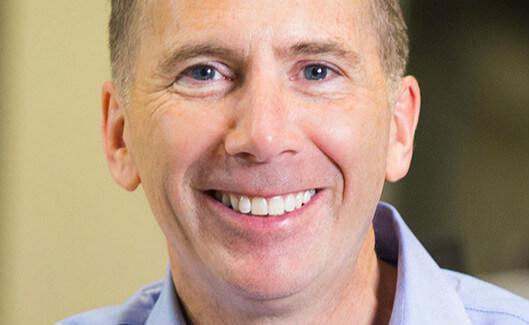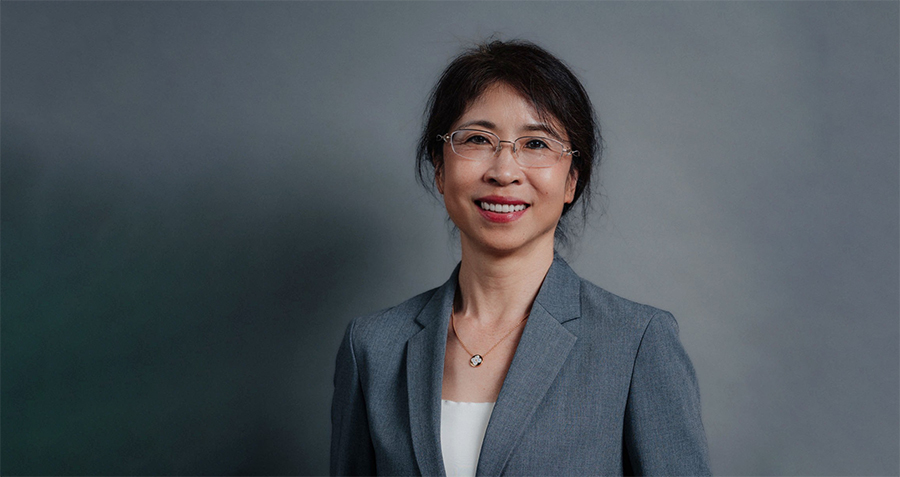Kevin Nolan is President & Chief Executive Officer of GE Appliances, a subsidiary of Haier, the world’s largest appliance manufacturer. Here he discusses the integration of GE Appliances into Haier and the opportunities it creates.
Haier bought America’s GE Appliances in 2016 to build a stronger presence in the US household appliance market. Haier, based in Qingdao, China, is the world’s leading appliance manufacturer, but at the time the company only held 1.1% of the US market. As a traditional American company, GE Appliances, headquartered in Louisville, Kentucky, was able to help with that.
Kevin Nolan is CEO of GE Appliances with overall responsibility for setting the short- and long-term strategies, as well as overseeing product innovation, product line performances and technology to maximise financial and business results. In his 28-year GE career, Nolan has progressed through various cross-functional operating roles in a variety of GE businesses.
In this interview, Nolan looks at the future of household appliances, the importance of brand image in global markets and valuable lessons learned in cross-border M&A integration.
Haier and GE Appliances, for many people, would not have seemed an obvious combination. How has it worked out and what are some lessons in terms of cross-border M&A integration that would be relevant to other companies?
If you look at the industry, it’s actually a good combination because the two companies have distinct strengths and the combination brings those strengths together so that they can be built upon. You have Haier, a strong Chinese appliance company and then you had GE Appliances, a strong American company, but neither were truly global. So by bringing these two together, you suddenly have a globalized company. It has the potential of being a beautiful combination.
Bringing together these two cultures comes with challenges. Looking at the history of Haier and what it’s done in China, as well as the 100-year-old history of GE in the US, we had a lot of pride. So the biggest lesson to come out of this is respect. It’s important to be able to respect both cultures and learn how to take the best from both worlds to create something new, without one trying to dominate the other from a cultural standpoint.
Haier has also let us learn from them: understand their philosophy, what they’re doing, their drive as a business and their ideas. We’re now working on translating those ideas into our markets. What Haier understands well, and what global companies need to understand, is that markets are different and consumers are different.
Business ideas might not be as universal as you think, because they’re not translated well. Haier has a universal idea, but it has to be translated to work in the market. It’s important to get to know each other, look through surface cultural differences and understand underlying ideas and beliefs. Working on adapting those ideas and using them in your local market is critical.
GE Appliances still exists as a brand. To what extent is the name Haier used in GE Appliance’s marketing and promotion?
If you look at one of the strategies of Haier and that we’ve adopted is the House of Brands strategy. Our company name is now “GE Appliances, a Haier company,” so we have both GE Appliances and Haier in our name. What’s more important ultimately, however, are our brands.
GE is a brand that we go to market with and that has a very targeted customer, while Haier is a brand that had been in America before. We’ve also offered products under other brands, such as Café, Hotpoint, Monogram and Profile. Some used to be sub-brands of GE but have since grown to become their own independent brands, so we have in some ways removed GE from being a parent-brand.
Then with Haier rebuilding its brand in the market, we want to make sure that we have the right products to represent its image as a company. The image that we’re focusing on is aimed at urban living, because more and more people want to move into cities in the US. It is a trend that’s future-oriented and caters toward millennials with technology and new smart devices. GE is a more traditional brand, so Haier will be the one that has an edgy image and focuses on the future. All of this was important for us when we were planning out how to grow the company as a whole.
To what extent do consumers today see GE Appliances as a Chinese company?
I don’t believe that customers really see the company any differently than before. If you’re an American consumer and you’re used to seeing GE, we still appear as GE. The business community might be more clued in to what has happened, but the average consumer mainly just sees the brand and Haier is not a very well-known name or brand in the US.
How closely is GE Appliances integrated into the overall Haier strategy and business development?
GE Appliances is key to the strategy of Haier. When Haier bought GE Appliances, it was a strategic investment and part of Haier’s globalizing as a company. We’re key and core to that strategy that Haier has implemented.
What opportunities for growth do you see? And what areas of GE Appliances’ traditional business will fall away over the coming years?
We see big opportunities for growth. Our company is now the fastest-growing appliance company in the US. We feel that under Haier we were liberated in a way as we’ve been able to grow at a faster pace than ever before. Overall, we feel good about our prospects.
It’s more about what we’re gaining than what we’re losing. We started developing new microenterprises to get into new markets, but I wouldn’t say we’re getting rid of anything. We’ve enacted the strategy of microenterprises, they’re very organic. As opportunities arise, we’re taking advantage of them. One example of that is how we’ve entered the market of producing air conditioners for the recreational vehicle (RV) market, which is big in the US. It is not something that we had ever done before, but that got started around mid-2019 and is doing very well. That’s just a small example of something that we probably wouldn’t have done before that we’re doing now.
To what extent is the element of foreignness an advantage in China? How is that changing for Chinese consumers?
GE Appliances used to be in China years ago, but we’ve stopped doing business there. Haier is keen on growing the GE brand in China, as they feel that there’s a segment of customers that it would resonate with. Again, it’s part of this House of Brands strategy where there’s a targeted consumer base that might appreciate that brand and what that brand stands for. We overlook the brand governance, but how we go to market and how Haier wants to grow the business in China is their call.
How quickly is IoT (Internet of Things) going to impact your industry and in what products will we be seeing these changes in?
I’d say it’s already been impacted. Most of our appliances are already IOT-enabled as IOT has been a part of our strategy. It’s core to what we’re doing and where we see the future going, but in reality that future is already here. It’s already rooted in appliances, it’s something that’s going to become more and more important as we continue to go forward.
Will IoT level the business playing field in a way? What kind of companies and what kind of strategies are going to be successful in the new era?
I don’t think IOT necessarily levels the playing field. In many ways, as you drive more technology into products and services, it becomes much more sophisticated, but do you really have a platform and an ecosystem for your products to work well on top of?
IOT is going to be different in different markets, but it’s going to be one where partnership between various devices becomes important. In a consumer’s home, they may have different kinds of devices that need to work together in the home ecosystem. Therefore we’re very much into developing partnerships.
If a consumer buys a GE appliance, they can be well-assured that our product is going to work well within their home system. From a data security standpoint we’re a trusted brand, so people can rely on us from a connectivity standpoint as well.
Your IoT-infused products are going to produce massive amounts of data. What should be the attitude of consumers and of companies to that data?
As individual consumers, you have to be aware and concerned with where your data is going and what it’s going to be used for. And as a company you must be responsible about who you are serving. Are you truly serving your users and consumers and how are you utilizing that data? We’re sensitive on that as we want to make sure we’re utilizing that data to know our consumers better and make sure our products are providing the services and the benefits that consumers want. So we have a very consumer user-centric approach to what we’re doing with IOT.
Technology is changing so quickly and GE Appliances are used in such a personal capacity. Could you paint a picture of what society will look like 10-20 years from now? How will it differ from today?
To look 10-20 years into the future, you’ve got to ground yourself in how things looked 10-20 years ago and observe the changes that have occurred. Twenty years ago, we didn’t have smartphones. Our lives have dramatically changed the way we get news, the way we send information, as well as the way we communicate with our friends and our family. Everything has changed over the past 20 years.
When looking back 10 years, however, the changes are more subtle. In the past 10 years, devices became more advanced and better at what they do. But we’re starting to see a maturity in this age of mobility. And I think in 20 years from now, there’s going to be something new from a mobility standpoint. In the future are we really going to be carrying around these phones and these devices or will the technology just be more present among us?
When we look at appliances, the way that people shop and how they interface with brands has all changed over the past 20 years, there are still fundamental things in life that we hold dear to ourselves. An example would be a family meal. I don’t think that is going to get replaced.
The way you get your groceries and how a refrigerator looks will likely change drastically, but at the end of the day, food needs to be chilled, clothes need to be washed and dishes need to be clean. So there are core things that we’re still going to be doing 20 years from now. The tasks will be simpler and more automated, but they will still take place. Will we be talking on cell phones in 20 years? I hope not. But will I sit down to a home cooked meal in 20 years? I sincerely hope so.
How is the robotization of production changing the nature, location and costings of GE Appliances’ and Haier’s production?
As a company, we believe in zero distance. We want to be next to our customers and we want to know them better than anybody else. If you’re in a market, you ideally want to produce in that market, which is a philosophy of Haier that is going to serve it well into the future. Manufacturing is a big part of what we do and it’s actually been strengthened under Haier, but part of being able to produce where your consumers are, is making sure that you’re cost effective, that you can get the labor force that you need and making sure that you can produce quality goods.
Automation is playing a key role in that now and will continue to do so in the future. Jobs will still exist, but with improved efficiency and quality of products, jobs will also become better with automation. A big part of the Haier strategy is to produce what an individual wants, when they want it.
People talk about a fundamental decoupling between China and the US and it appears to be happening, particularly in areas that are tech heavy, which yours is. How is decoupling going to play out? What are the implications of decoupling for businesses around the world?
It’s hard to predict, but as business people all we can so is simply make sure that we remain competitive. In the end it is a global economy and while many are talking about decoupling, I can’t see a world where you’re going to have true decoupling between China and the US. These two economies are just too important for each other. I believe that this trend of manufacturing locally is more driven by serving your consumers then a political drive. Companies are still going to want a global supply base and that’s going to be there—I can’t see that going away. There might be different political agendas from time to time, but in the future, I think that there will inevitably be a strong relationship between these two countries.




















